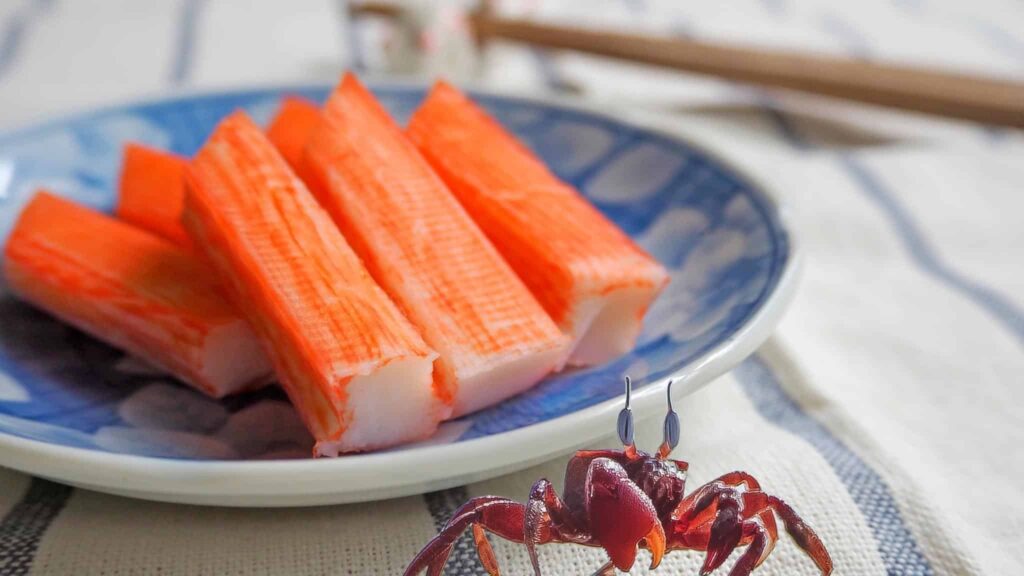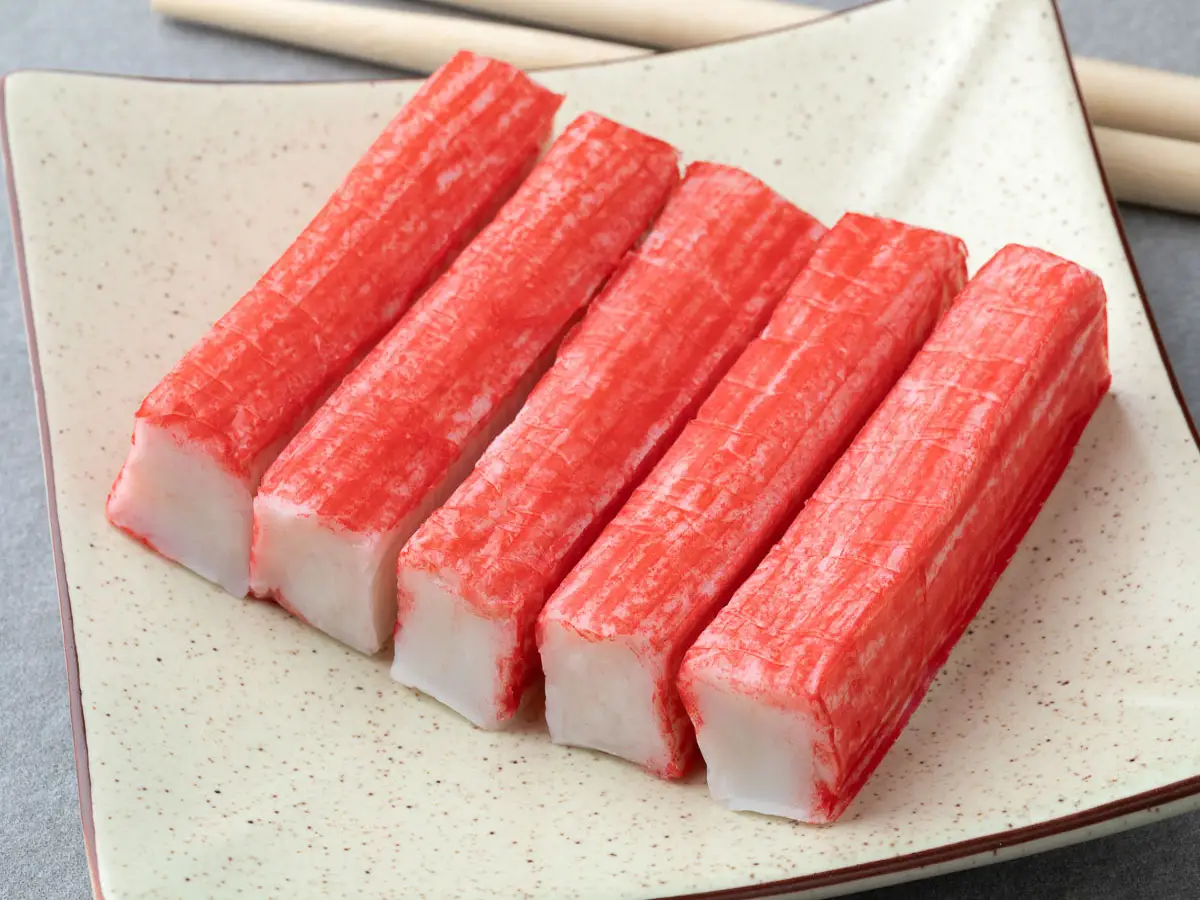If you’ve ever enjoyed imitation crab sticks in sushi rolls or seafood salads, you’ve probably eaten surimi.
This versatile food product has a long history, and while it might not be “real crab,” it has earned its place in kitchens around the world.
What Is Surimi?
Surimi is a processed seafood product made primarily from white-fleshed fish. The term comes from Japanese, where “surimi” means “ground meat.” It was first developed in Japan centuries ago as a way to preserve fish, and today it is used globally as a base for imitation crab, shrimp, and other seafood products.
Surimi is valued for its mild taste, firm texture, and ability to take on the flavor of seasonings or flavorings added during production.
Main Components of Surimi
Surimi itself is not just ground fish—it’s a carefully formulated product. Its main components include:
- Fish protein: Typically from species like pollock, whiting, hake, or threadfin bream.
- Water: Used to wash the fish paste and adjust texture.
- Cryoprotectants (sugars or sorbitol): Help stabilize proteins and prevent spoilage during freezing.
- Starch: Improves texture and binding.
- Salt: Enhances flavor and protein binding.
- Vegetable oils: Sometimes added for richness.
- Flavorings and colorants: To mimic crab, lobster, or shrimp.
- Egg whites or soy protein (optional): For additional firmness and elasticity.
This combination makes surimi a highly adaptable ingredient for many seafood-style products.
How Surimi Is Produced
The production of surimi is a multi-step process designed to create a clean, neutral-tasting protein base:
- Fish Selection and Preparation
Fresh, white-fleshed fish are cleaned, deboned, and filleted. The dark muscle and skin are removed to avoid unwanted flavors or colors. - Mincing and Washing
The fish flesh is minced into a fine paste and repeatedly washed with cold water. This step removes fat, blood, and soluble proteins that could affect flavor and shelf life. - Water Removal
Excess water is carefully drained, leaving behind concentrated fish protein. - Mixing with Additives
Cryoprotectants, starch, and other ingredients are blended into the paste to create the desired texture and improve freezing stability. - Freezing
The prepared surimi paste is typically frozen in blocks. This frozen base can later be thawed and shaped into different seafood products. - Final Product Formation
To make imitation crab, for example, the surimi is flavored, colored (often with paprika extract or carmine), and extruded or molded into stick-like shapes that mimic crab leg meat.
The Versatility of Surimi
Thanks to its neutral base, surimi can be shaped and flavored into a wide variety of products:
- Imitation crab sticks (kanikama)
- Seafood balls for soups and hotpot
- Artificial shrimp, lobster, or scallops
- Protein-rich snacks and ready-to-eat meals

Surimi is more than “fake crab”—it’s a carefully engineered food with centuries of tradition behind it.
Nutritious, affordable, and versatile, it allows consumers worldwide to enjoy the taste and texture of seafood in a sustainable and cost-effective way.

